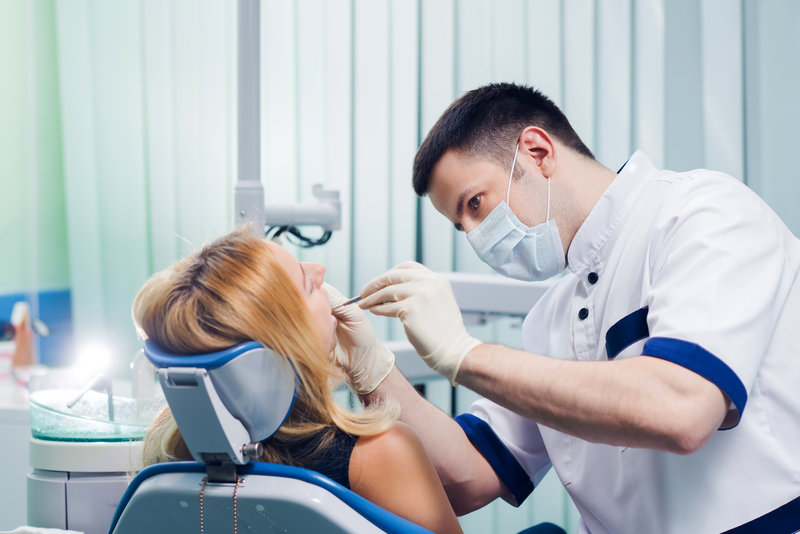Everything You Need to Understand About Braces, Aligners, and Retainers
Orthodontic therapies such as retainers, braces, and aligners play a vital duty in attaining a straighter and healthier smile. Each of these orthodontic home appliances offers a particular function in dealing with oral misalignments and attack problems. From conventional braces to modern aligners, there are various choices readily available to provide to private needs and choices. Comprehending the differences, advantages, and maintenance needs of these orthodontic tools is crucial for anyone thinking about enhancing their dental placement. The trip to a flawlessly aligned smile includes more than simply visual appeal; it influences general dental health and wellness.
Sorts Of Orthodontic Therapies
Orthodontic therapies encompass various approaches focused on remedying and straightening teeth for enhanced dental health and visual appeals. The most common kind of orthodontic treatment is traditional braces, including metal brackets bonded to the teeth and linked by cables. These dental braces gradually shift teeth into the preferred placement with normal modifications by an orthodontist.
One more prominent option is ceramic braces, which are much less obvious than metal braces as a result of their tooth-colored or clear braces. Lingual braces are connected to the back of the teeth, making them virtually unseen from the exterior. For those seeking a more very discreet alternative, clear aligners like Invisalign provide a detachable and clear choice to standard braces.

Benefits And Drawbacks of Dental Braces
When considering orthodontic treatment alternatives, it is vital to consider the advantages and downsides of dental braces. Braces are extremely reliable in dealing with a wide variety of oral issues such as crooked teeth, congestion, misalignment, and bite issues. One of the main benefits of dental braces is their dependability in supplying specific and foreseeable outcomes over a defined therapy duration. They are additionally ideal for patients of every ages, making them a versatile alternative for orthodontic treatment. Furthermore, braces can aid improve oral health and wellness by boosting the placement of teeth, which can lower the danger of dental cavity, gum disease, and various other oral troubles in the future.
Another aesthetic factor to consider is the visibility of standard steel dental braces, which might impact the wearer's self-confidence during treatment. Regardless of these drawbacks, the tested performance of dental braces in attaining optimal dental positioning often outweighs the cons for lots of patients.
Benefits of Aligners
An increasingly preferred option to conventional braces, aligners supply countless advantages in orthodontic treatment. Aligners are also detachable, enabling patients to conveniently comb and floss their teeth, leading to much better dental health during therapy compared to typical dental braces.
Moreover, aligners normally need fewer brows through to the orthodontist for changes, as contrasted to braces, which can be a practical factor for people with busy timetables. The therapy process with aligners is frequently extra comfortable, as there are no steel brackets or cables that may trigger irritation to the mouth. Additionally, aligners can usually accomplish cause a shorter timespan than traditional dental braces, depending on the complexity of the orthodontic concerns being dealt with.

Value of Retainers
The relevance of retainers in keeping orthodontic therapy outcomes can not be overstated. Retainers play an essential function in protecting the results accomplished with aligners or braces. After the initial phase of orthodontic treatment, where dental braces or aligners are made use of to align teeth and appropriate bite problems, retainers are vital for preventing the teeth from changing back to their initial setting.
Retainers assist to stabilize the teeth in their new straightened placement, permitting the sustaining structures in the mouth to adapt to the adjustments. Without correct retainer wear, there is a danger of relapse, where the teeth gradually relocate back towards their pre-treatment positioning. This can undo all the progress made throughout the orthodontic therapy, resulting in the need for additional treatment.
It is advised to use retainers as directed by your orthodontist to preserve the results of your therapy in the long-term. Normally, retainers are originally put on full-time and after that transitioned to nighttime wear you could try these out once the orthodontist identifies it is ideal. Constant retainer use is essential to guaranteeing a long-term, lovely smile.
Maintenance Tips for Orthodontic Appliances
Appropriate treatment and maintenance of orthodontic home appliances are essential for ensuring their efficiency and long life. Braces, aligners, and retainers require thorough focus to keep them in optimum condition throughout the treatment procedure. When putting on braces, it is important to preserve excellent oral health by cleaning after every meal and flossing day-to-day to avoid plaque build-up. Staying clear of hard, sticky foods can also avoid damage to the dental braces. Normal exams with your orthodontist are necessary to make sure that the dental braces are readjusted appropriately and are working as intended.

Final Thought
Finally, orthodontic therapies such as braces, aligners, and retainers play an essential duty in remedying dental concerns and enhancing overall oral wellness. Each orthodontics treatment alternative has its very own pros and cons, and it is essential to follow proper maintenance suggestions to guarantee the efficiency of the devices. Whether it is braces for more serious instances or aligners for a more very discreet alternative, speaking with a dental expert will certainly aid identify the ideal therapy prepare for specific needs.
Orthodontic treatments such as aligners, dental braces, and retainers play a vital duty in attaining a straighter and healthier smile.Another popular choice is ceramic braces, which are less recognizable than steel dental braces due to their tooth-colored or clear brackets.In some cases, after dental braces or aligner therapy, retainers are necessary to maintain the newly aligned setting of the teeth. After the initial phase of orthodontic treatment, where aligners or dental braces are utilized to align teeth and appropriate bite issues, retainers are vital for preventing the teeth from shifting back to their initial position.
In conclusion, orthodontic treatments such as aligners, braces, and retainers play a crucial role in correcting oral concerns More hints and boosting total oral health and wellness. - orthodontics